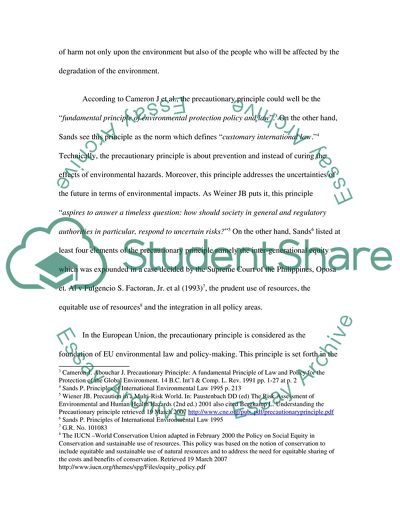Cite this document
(Precautionary Principle in EU Environmental Law Article, n.d.)
Precautionary Principle in EU Environmental Law Article. https://studentshare.org/law/1706759-consider-the-meaning-of-the-precautionary-principle-in-eu-environmental-law-paying-particular-attention-to-the-following-issues
Precautionary Principle in EU Environmental Law Article. https://studentshare.org/law/1706759-consider-the-meaning-of-the-precautionary-principle-in-eu-environmental-law-paying-particular-attention-to-the-following-issues
(Precautionary Principle in EU Environmental Law Article)
Precautionary Principle in EU Environmental Law Article. https://studentshare.org/law/1706759-consider-the-meaning-of-the-precautionary-principle-in-eu-environmental-law-paying-particular-attention-to-the-following-issues.
Precautionary Principle in EU Environmental Law Article. https://studentshare.org/law/1706759-consider-the-meaning-of-the-precautionary-principle-in-eu-environmental-law-paying-particular-attention-to-the-following-issues.
“Precautionary Principle in EU Environmental Law Article”. https://studentshare.org/law/1706759-consider-the-meaning-of-the-precautionary-principle-in-eu-environmental-law-paying-particular-attention-to-the-following-issues.


